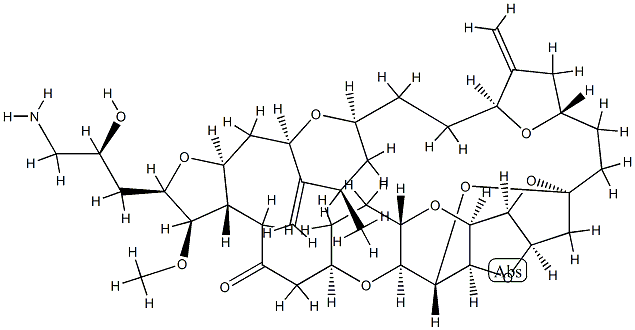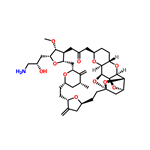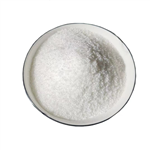The U.S. FDA approved eribulin mesylate (also referred to as E7389) in
November 2010 for the treatment of metastatic breast cancer (MBC) for
patients who previously received at least two chemotherapeutic regimens
for late-stage disease. Eribulin is a synthetic analog of the marine natural product halichondrin B, which is isolated from the sea sponge Halichondria okadai. Eribulin retains most of
the structural elements that constitute the right hand side of halichondrin
B; structure–activity relationship (SAR) studies suggested that the antitumor
activity of halichondrin B resides in that part of the molecule .
Eribulin is a microtubule inhibitor that binds close to the vinca-binding
site of tubulin. Unlike most tubulin inhibitors like taxanes, epothilones,
and vinca alkaloids that inhibit microtubule dynamic instability by changing
tubulin addition and loss parameters, eribulin’s effects on dynamic
instability are novel in that eribulin inhibits the growth phase of microtubules
without affecting the shortening phase by binding to microtubule
plus ends.
Eribulin is a anticancer drug and also is a fully synthetic macrocyclic ketone analogue of the marine natural product halichondrin B. It derived from a marine sponge (Lissodendoryx sp.) with antineoplastic activity.
ChEBI: Eribulin is a fully synthetic macrocyclic ketone analogue of marine sponge natural products. Inhibits growth phase of microtubules via tubulin-based antimitotic mechanism, which leads to G2/M cell-cycle block, disruption of mitotic spindles, and, ultimately, apoptotic cell death after prolonged mitotic blockage It has a role as an antineoplastic agent and a microtubule-destabilising agent. It is a macrocycle, a polyether, a polycyclic ether, a cyclic ketone, a primary amino compound and a cyclic ketal. It is a conjugate base of an eribulin(1+).
Antineoplastic agent:Treatment of metastatic breast cancer
Eribulin is an anti-cancer drug currently administered intravenously (IV) for the treatment of breast cancer and liposarcoma patients resistant to taxane therapy because of its excellent efficacy against taxane-resistant tumor types. Common side effects of Eribulin include: gastrointestinal reactions (dry mouth, nausea or vomiting, loss of appetite), weakness, pain, chills, cough, convulsions, frequent urination, nasal congestion, irregular heartbeat, difficulty breathing, decreased urine output, frequent urination, headache, etc. Other side effects include fainting, irregular heartbeat, repeated or severe allergic reactions, etc.
Potentially hazardous interactions with other drugs
Antipsychotics: avoid concomitant use with
clozapine (increased risk of agranulocytosis).
Minimal metabolism. Eribulin is eliminated primarily
by biliary excretion. The transport protein involved in
the excretion is presently unknown. Preclinical studies
indicate that eribulin is transported by Pgp. However,
it is unknown whether Pgp is contributing to the biliary
excretion of eribulin.
Eribulin is a non-taxane, microtubule dynamics inhibitor that increases survival of patients with metastatic breast cancer. Eribulin binds to the vinca domain of tubulin and inhibits the polymerization of tubulin and the assembly of microtubules, resulting in inhibition of mitotic spindle assembly, induction of cell cycle arrest at G2/M phase, and, potentially, tumor regression.



